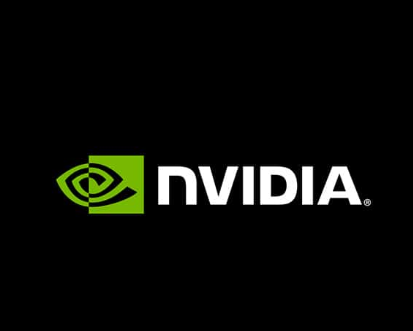Nvidia Becomes Third Most Valuable US Company, Surpassing Google and Amazon
Yesterday’s sharp decline in NVIDIA shares caused uneasiness in the markets. The reason for the decline was the fear that the fourth-quarter reports would be negative, contrary to expectations. However, those fears did not materialize, as the fourth-quarter earnings reports documented a gain above expectations. This positive news led to a surge in NVIDIA’s shares, surpassing the levels of the previous two days.
Moreover, NVIDIA’s market value surpassed that of Amazon and Alphabet, making it the third-largest valuable company in the United States. This notable increase leads us to ask: What factors drive NVIDIA’s unstoppable rise?
The story of NVIDIA begins in 1993 when it was founded by Jensen Huang, Chris Malachowsky, and Curtis Priem. The company initially focused on the development of GPUs for gaming and professional markets. However, its trajectory changed dramatically with the rise of parallel computing and the advent of the AI boom.
The company’s first major success came in 1999 with the launch of the GeForce 256, a groundbreaking graphics card that offered unprecedented performance and ushered in a new era of immersive gaming.
Parallel computing, which involves the simultaneous execution of multiple computations, was traditionally the domain of expensive supercomputers. However, NVIDIA recognized the inherent potential of the Graphics Processing Unit (GPU) as a powerful parallel computing engine. Unlike CPUs, designed for sequential tasks, GPUs could handle complex calculations simultaneously, making them ideal for tasks like image processing, scientific simulations, and even early artificial intelligence applications.
Andrew Ng, Founder of Landing AI: “NVIDIA’s GPUs are the workhorses of the AI revolution. They provide the computational power that makes deep learning possible.”
CUDA: The Secret Weapon
In 2006, NVIDIA unleashed a game-changer: CUDA, a parallel computing platform that unlocked the true potential of GPUs for non-graphics applications. By enabling developers to write code specifically for GPUs, CUDA opened doors to a new era of high-performance computing. Scientists, researchers, and engineers across diverse fields embraced the technology, utilizing it for tasks ranging from drug discovery to weather forecasting to autonomous driving.

Jensen Huang, CEO of NVIDIA: “AI is the next generation of computing. It’s going to change every industry, and it’s going to create incredible new opportunities.”
The early 2010s witnessed a surge in artificial intelligence research and development. NVIDIA, with its powerful GPUs and CUDA platform, was perfectly positioned to capitalize on this trend. Deep learning, a powerful AI technique requiring massive computational resources, found GPUs to be ideal for training and running complex neural networks. The company’s dedicated AI chips, like the Tesla series, quickly became the go-to choice for research institutions and tech giants alike.
While gaming remains a core part of NVIDIA’s business, the company has successfully diversified its offerings. The automotive industry, driven by the rise of self-driving cars, has embraced NVIDIA’s DRIVE platform for its advanced processing capabilities. Data centers are increasingly utilizing NVIDIA’s GPUs for high-performance computing and AI workloads. With its recent acquisition of Mellanox, NVIDIA has further expanded its reach into the networking and data center infrastructure space.
Satya Nadella, CEO of Microsoft: “NVIDIA is at the forefront of breakthroughs in AI and high-performance computing. Their technology is essential for driving innovation across a wide range of industries.”
Wide Product Range
NVIDIA has indeed diversified its product portfolio beyond gaming GPUs, now offering solutions for AI, data center computing, automotive, and metaverse applications.
Let’s examine the solutions provided by NVIDIA:
Design and Simulation
NVIDIA RTX™ and NVIDIA Omniverse™ deliver the performance to help professionals, creators, developers, and students worldwide enhance creative workflows and build, operate, and connect metaverse applications.
High-Performance Computing
High-performance computing (HPC) is the ability to process data and perform complex calculations at high speeds. HPC is one of the most essential tools fueling the advancement of computational science.
Gaming and Creating
NVIDIA GeForce RTX™ powers the world’s fastest GPUs and the ultimate platform for gamers and creators. Enjoy beautiful ray tracing, AI-powered DLSS, and much more in games and applications, on your desktop, laptop, in the cloud, or in your living room.
Automotive
From developing autonomous vehicles on NVIDIA DRIVE® to creating factory digital twins and retail experiences with NVIDIA Omniverse, our automotive solutions offer the performance and scalability to design, visualize, simulate, and create all types of future transportation.
Robotics and Edge Computing
The NVIDIA Jetson™ and Isaac™ platforms provide end-to-end solutions to develop and deploy AI-powered autonomous machines and edge computing applications across manufacturing, logistics, healthcare, smart cities, and retail.
Data Center and Cloud Computing
From the cloud to the office to the data center to the edge, NVIDIA provides solutions that deliver breakthrough performance on enterprise AI and HPC workloads at any scale, driving business decisions in real time and resulting in faster time to value.
NVIDIA Invests in OpenUSD
OpenUSD (Universal Scene Description) is an open-source initiative for creating, sharing, and exchanging high-performance 3D graphics and visualization assets.
OpenUSD’s open and interoperable nature aligns with NVIDIA’s vision of democratizing access to powerful technologies and promoting collaboration within the 3D ecosystem. OpenUSD plays a crucial role in industries like automotive, robotics, and architecture, which are key areas of focus for NVIDIA and OpenUSD is seen as a foundational technology for building the metaverse and other immersive experiences, areas where NVIDIA holds significant investments.
Nvidia Partnerships
NVIDIA engages in diverse collaborations with companies across various sectors, each with distinct objectives and areas of specialization. Here’s an overview of some significant partnerships:

AI and Cloud Computing:
Microsoft: Working together on cloud-based AI services such as Azure AI and Azure Machine Learning, leveraging NVIDIA GPUs for accelerated performance.
Amazon Web Services (AWS): Collaborating on cloud-based AI solutions like AWS Deep Learning AMIs and DGX Cloud, offering pre-configured environments with NVIDIA hardware.
Google Cloud: Joint efforts on projects like AI platform Anthos and Vertex AI, integrating NVIDIA GPUs for improved AI workloads.
Automotive:
Audi: Collaborating on the advancement of autonomous driving technologies and infotainment systems for Audi vehicles, utilizing NVIDIA’s DRIVE platform.
Mercedes-Benz: Partnering on next-generation infotainment systems and advanced driver-assistance systems (ADAS) for Mercedes vehicles, powered by NVIDIA technology.
Tesla: While there is no current formal collaboration, both companies significantly contribute to the autonomous driving landscape, influencing industry direction.
Metaverse and Gaming:
Epic Games: Partnering on building metaverse infrastructure using Unreal Engine, leveraging NVIDIA’s Omniverse platform and RTX technology.
Roblox: Collaborating on creating immersive experiences within Roblox, utilizing NVIDIA’s graphics capabilities for enhanced visuals and performance.
Microsoft (Xbox): Joint efforts on developing cloud gaming solutions like Xbox Cloud Gaming, enabling high-quality gaming experiences across devices with NVIDIA’s technology.
Research and Development:
Stanford University: Collaborating on research projects in areas like AI, robotics, and healthcare, utilizing NVIDIA’s technology and expertise.
MIT: Partnering on research projects in areas like computer vision, deep learning, and autonomous vehicles, combining academic brilliance with NVIDIA’s technological prowess.
Carnegie Mellon University: Collaborating on research projects in areas like robotics, natural language processing, and computer graphics, fostering innovation and knowledge exchange.
What is the potential for a further increase in NVIDIA’s share price?
The company’s focus on training AI systems and its expanding presence in inference, coupled with the strength of its CUDA software stack, positions NVIDIA as a dominant player in the rapidly growing AI market. Analysts like Ruben Roy from Stifel and John Vinh from KeyBanc have raised their target prices for NVIDIA, anticipating continued dominance and growth in the coming years.
Based on the strong earnings performance, optimistic guidance, and bullish outlook from analysts, NVIDIA’s shares have the potential for further growth, with some estimates projecting the stock to reach $1,000 within the next year and beyond.










